Introduction
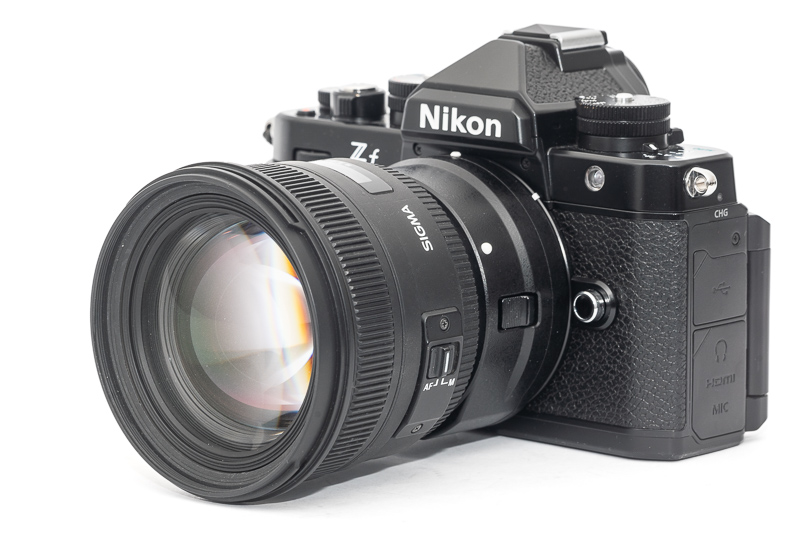
Back in 2008 the Sigma 50mm 1.4 EX was the biggest and most expensive 50mm f/1.4 lens with AF for DSLRs. Now, 17 years later, it looks reasonably sized compared to its modern competitors and can be found used for bargain prices.
But is it a lens still worth considering in 2025? Let us find out in this review!
Update April 2025: more samples added
Sample Images








Contents
Specifications / Version History
The Sigma 50mm 1.4 EX is the predecessor to today’s Sigma 50mm 1.4 Art and to make things more complicated there was also a facelift of the first version: early 50mm 1.4 EX have a rubbery felt finish while the later ones have a flat plastic casing. Optics are identical. The sample being reviewed here is one of the later ones and has the following specifications:
-
- Diameter: 85 mm
- Field of view: 47° (diagonally)*
- Length: 68 mm + adapter
- Weight: 510g + adapter (without hood, without caps)
- Filter Diameter: 77 mm
- Number of Aperture Blades: 9 (rounded)
- Elements/Groups: 8/6

- Close Focusing Distance: 0.45 m
- Maximum Magnification: 1:7.4
- Mount: Canon EF / Nikon F
*the Sigma 50mm 1.4 EX is wider than your usual 50mm lens
The lens has been discontinued long time ago, it can be found used on ebay.com | ebay.de for about $250/250€ (affiliate links)
Handling/Build quality
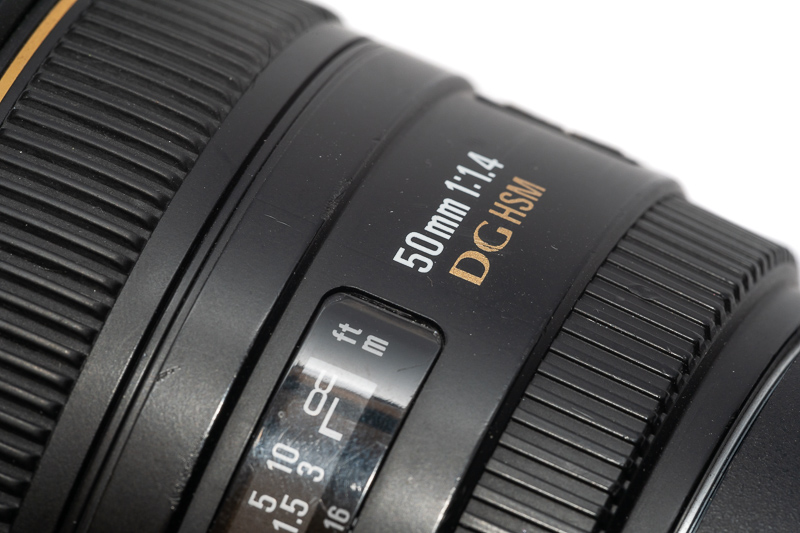
Before the Zeiss Otus 55mm 1.4 and the Sigma 50mm 1.4 Art, 50mm lenses were often small double-gauss designs and usually very affordable. This Sigma 50mm 1.4 EX was probably the last double-gauss 50mm lens aimed at the higher end market and significantly bigger and heavier than the 50mm f/1.4 lenses from Canon and Nikon at that time.
Still, compared to today’s higher end 50mm AF lenses it looks reasonably sized.
There is a mechanical coupling between focus ring and helicoid and it takes roughly 100° from the minimum focus distance (0.45 m) to infinity. Considering this is an AF lens the resistance is actually quite nice. An AF/MF-switch can also be found on the lens.
The lens feels solidly made at first sight, but it seems many suffer from grinding noise when focusing (this is true for AF and MF) as the whole heavy optical block has to be moved. That grinding noise can be a sign of the hypersonic motor failing in the not so distant future.
If you have an early sample the felt on the lens barrel might also start to come off.

The lens usually ships with a big petal-shaped lens hood.
Autofocus
I tried the EF version with the Sigma MC-11 adapter on Sony A7rII and A7III as well as the F-mount version via the Monster LA-FE1/LA-FE2 adapters on the aforementioned Sony cameras as well as on the Nikon Z6 and Zf via Nikon’s own FTZ II adapters.
As the EX lenses are not part of the “Sigma Global Vision” lineup this 50mm 1.4 is not officially supported by the Sigma MC-11. Setting aperture always worked fine, but the AF was not super reliable.
Not a setup I would want to use when I depend on it working properly (e.g. during a wedding).
The F-mount version worked noticeably better via the FTZ II adapter on Nikon Z6 and Nikon Zf. Actually this Sigma lens works better here than it ever did on (D)SLRs.
Vignetting
light falloff

Wide open the light falloff amounts to roughly 1.9 EV, stopped down to f/2.0 this improves to 1.0 EV, stopped down to f/2.8 it is 0.7 EV and stopped down to f/8.0 almost unnoticeable 0.4 EV.
Compared to smaller rangefinder lenses these values are a bit lower and comparable to the Nikon AF-S 58mm 1.4G.
It should be noted though, that the 50mm f/1.4 lens with the lowest vignetting figures seems to be the successor of this lens, the Sigma 50mm 1.4 Art.

It is recommended to have a look at this article first to get an idea how this brightness graph works.
optical vignetting
Fast lenses usually show a noticeable amount of optical vignetting. Without going too much into technical details optical vignetting leads to the truncation of light circles towards the borders of the frame.
In the center of the frame almost every lens will render a perfect circle, but only lenses with very low optical vignetting will keep this shape in the corners.
So in the following comparison we move from the center (left) to the extreme corner (right) and see how the shape of the light circle changes.
The performance of the Sigma 50mm 1.4 EX is not bad here. For comparison’s sake I included the Nikon AF-S 58mm 1.4G and the results are quite similar. You also see a bit of onion ring structures caused by the aspherical elements which are clearly stronger with the Sigma lens.
Sharpness
infinity (42mp Sony A7rII)

The 42mp sensor shows why nowadays most higher end 50mm lenses feature more complex designs. The center is a bit soft from f/1.4 to f/2.0, in addition to that there is a significant midzone dip and the corners never look really great.
Therefore the Sigma 50mm 1.4 EX is not a great choice for infinity shooting.
portrait distance (1.4 m)
For portraiture it isn’t so important how flat the field is, it is more interesting to see what the sharpness is like when focused at different parts of the frame to take field curvature out of the equation.

This is what I did here, I refocused for every shot and aperture to get the best possible result at different locations in the frame (center, inner midframe and outer midframe).
Focus distance was roughly 1.4 m and the circle of the dollar bill is more or less the size of a human eye.
100% crops, A7III
Here the Sigma 50mm 1.4 EX actually shows a good performance, even in the outer midframe it is easily usable from the maximum aperture, this cannot be said about many (especially cheaper) f/1.4 lenses.
close (0.45 m, 1:7.4)
100% crops from center, A7rII, because of focus shift (see corresponding section) I refocused for every shot.
As is the case with many fast lenses without a floating elements design the performance at wider apertures near the minimum focus distance suffers a bit. Stopping down to f/2.0 gets rid of most of the spherical aberration (“glow”) and the center performance steadily improves on stopping down further. From f/2.8 the resolution in the center starts to look really good.
Flare resistance
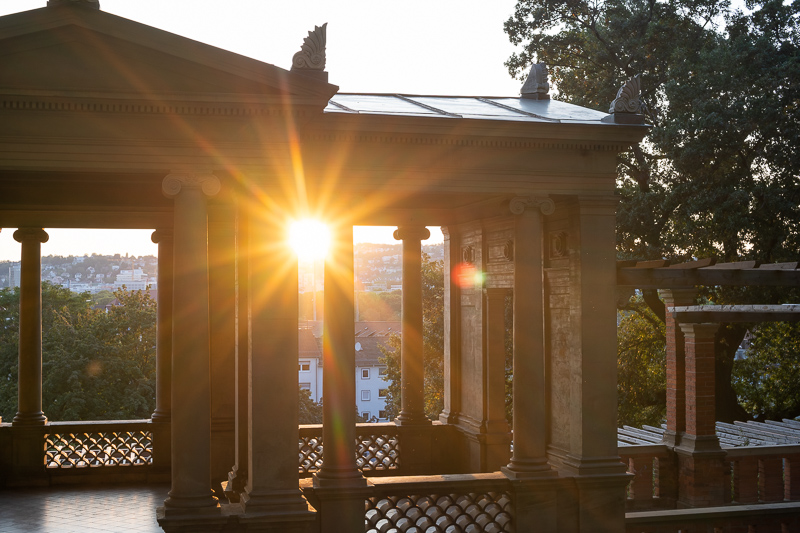
As always evaluating flare is a complex matter since you can get any lens to look bad if you push it hard enough and a slight change of scenario can affect results a lot.

Ghosting is generally not a big issue, you can sometimes catch a small ghost here or there but this will rarely ruin your shot, at least stopped down. If you shoot into the sun at f/1.4 you will find yourself with some more colorful blobs.

Veiling flare is a completely different matter though. Strong point light sources inside the frame (e.g. backlight) or also outside the frame (even when using the hood) will often rob the image of a good portion of contrast.
This becomes very obvious when looking at these three pictures:
Sony A7III | Sigma 50mm 1.4 EX | f/8.0 | 1/40s | hood attached
The first picture shows the worst veiling flare I could create. If we move the camera so that the light source is moving further away from the frame the contrast is significantly higher, but there is a position where we see some internal reflection, even stopped down, which is pretty rare.
The last picture shows the “normal” contrast of the lens, unaffected by stray light, for comparison.
Keep in mind though: adapters can have an influence on the performance in this category as well, so the lens might perform differently on a Canon EF camera or when using a different adapter.
Coma
100% crops from extreme corner, focused on corner, A7rII
Significant coma at f/1.4 and f/2.0. Big improvement at f/2.8 and good performance starting at f/4.0.
Still not a lens I would recommend for astrophotography at wider apertures.
Distortion
Sony A7rII | Sigma 50mm 1.4 EX | f/4.0
There is only very little distortion which is hardly visible in most shots, Camera Raw and Lightroom ship with a profile which is doing a good job at correcting it.
Bokeh

At the time of this lens’ release it was pretty hard to find a 50mm lens with pleasing bokeh. There simply were no lenses like the Voigtlander 50mm 1.2 let alone a Zhong Yi 50mm 0.95 available at that time.
Compared to its competition the Sigma 50mm 1.4 EX was often perceived as a 50mm lens with comparably pleasing bokeh, is this still the case when comparing it to modern alternatives? Let’s have a closer look.
As is ususally the case in close focus scenarios the bokeh is smooth and non distracting:




At mid distances the smooth transitions between in focus and out of focus areas look especially pleasing:


Also at longer focus distances and with busy backgrounds the lens is doing a good job, but under some circumstances you can also spot traces of double edged structures (2nd picture, top right corner):


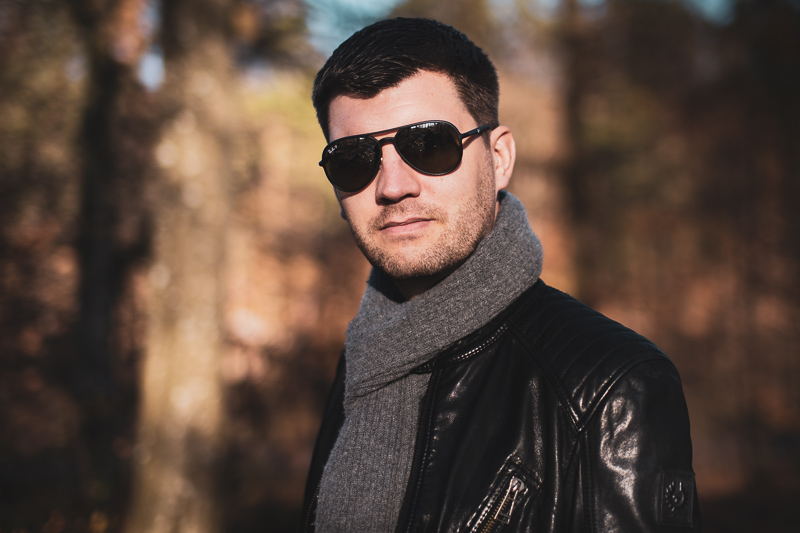

This is not to say the bokeh is flawless, under some circumstances (longer focus distance, point light sources in the background) the out of focus highlights can take on distracting triangle shapes. And there can also be onion ring structures visible (see optical vignetting section).

It is still not that easy to find a 50mm lens with undistracting, pleasing bokeh rendering and while there are some lenses I would personally rate higher than the Sigma 50mm 1.4 EX these don’t have AF and are usually way more expensive.
Sunstars
50% crops from center, A7rII
The Sigma 50mm 1.4 EX has 9 rounded aperture blades which are not perfecly aligned – as is often the case with Sigma lenses from that era – therefore the sunstars are not well defined. If you want to learn more about this topic have a look at this article.
Chromatic aberration
lateral
100% crops from corner, A7III
There are only minor lateral CA visible which are easily corrected in post.
longitudinal

Near the minimum focus distance longitudinal CA are clearly visible at wider apertures.
LoCA in the out of focus areas (“bokeh fringing”) are present and about average for a lens with these parameters.
Focus shift
33% crops, A7rII
The Sigma 50mm 1.4 EX is known to show noticeable focus shift. When stopping down the plane of optimal focus slightly shifts to the back. Unfortunately the lens focuses at maximum aperture on the Sigma MC-11. When using one of the later metabones adapters you can change to the advanced mode for focusing at working aperture, but this will only work with the slower contrast AF. Luckily the focus shift is not that strong, so this will usually not be an issue in the field.
Conclusion
good
|
average
|
not good
|
Back in the day I have been using two samples of this lens on my Nikon DSLRs and it was a real pain. While sometimes the results were great, usually they were not, because in addition to the focus shift by design there was additional distance dependant focus shift which could not be fixed by the Sigma service. On higher end DSLRs you could fine tune the AF for one distance, but that meant worse performance at other distances.
At least this issue has been solved when using the lens on a mirrorless camera, the AF accuracy is better than ever before.
Unfortunately the EF version of the Sigma 50mm 1.4 EX is not officially supported by the MC-11 adapter and the AF really was not the most reliable, for portraiture sessions it is okay, for weddings or moving children it would not be my first choice.
Luckily I found the F-mount version to work really well via the FTZ adapters on Nikon’ Z-mount mirrorless cameras. My sample worked really well, it is however possible 50mm samples running on older firmware may not work as well.
Let us talk about the optical qualities. The Sigma 50mm 1.4 EX seems to have been designed as a portrait lens, which makes sense. Off center sharpness at these distances is good, vignetting is comparably well behaved and there is of course the smooth and appealing bokeh, which can make this lens still desirable in 2025. The lens is also a bit wider than most other 50s, this will either be something you like or you don’t.
The Sigma 50mm 1.4 EX is one of those lenses that you don’t buy for record breaking resolution figures but because you like the look of the images it produces. If that is the case I am sure you will be able to overlook some of the disadvantages.
This is similar to what I have written in my Nikon AF-S 58mm 1.4G review, only here the lens is not prohibitively priced, but very affordable instead, therefore it is possible to buy a cheap one used, give it a try, and sell it with little to no loss should you not like it.
The lens has been discontinued long time ago, it can be found used on ebay.com | ebay.de for about $250/250€ (affiliate links)
Alternatives
Just lately we put together a rather comprehensive guide on 50mm lenses for Sony FE cameras which should give you a good overview.
The most obvious competitor is probably the Samyang 50mm 1.4 AF. A lens none of us has used personally yet and that comes with very mixed reviews and some compromises as well.
If you are looking for something smaller and don’t mind using manual focus the TTArtisan 50mm 1.4 might also be worth a closer look as it can be bought new at a very reasonable price and shows slightly better performance overall including similarly nice bokeh rendering.
Sample Images





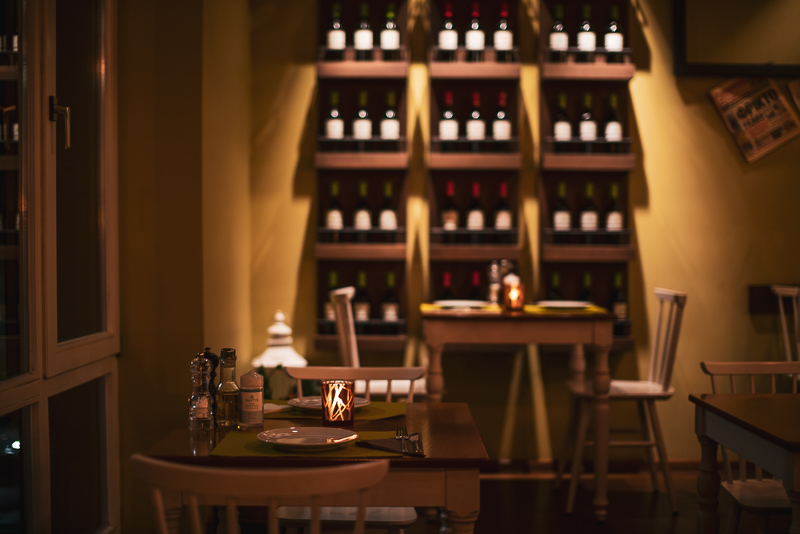





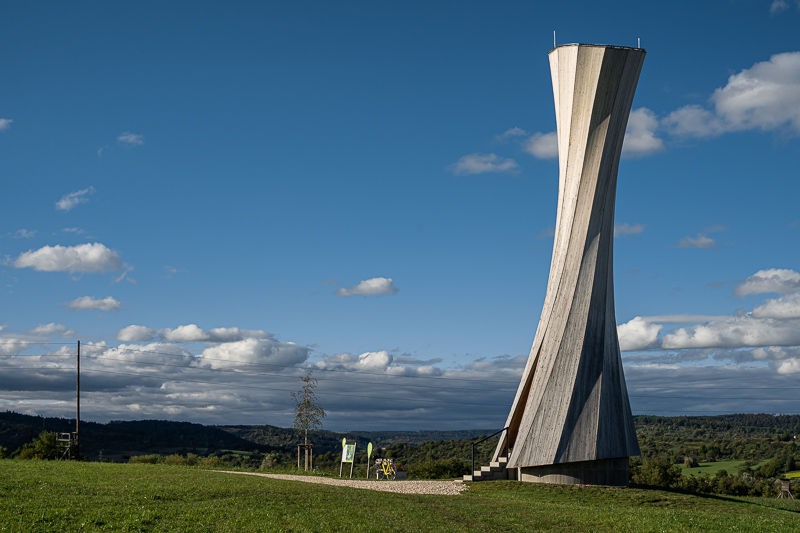
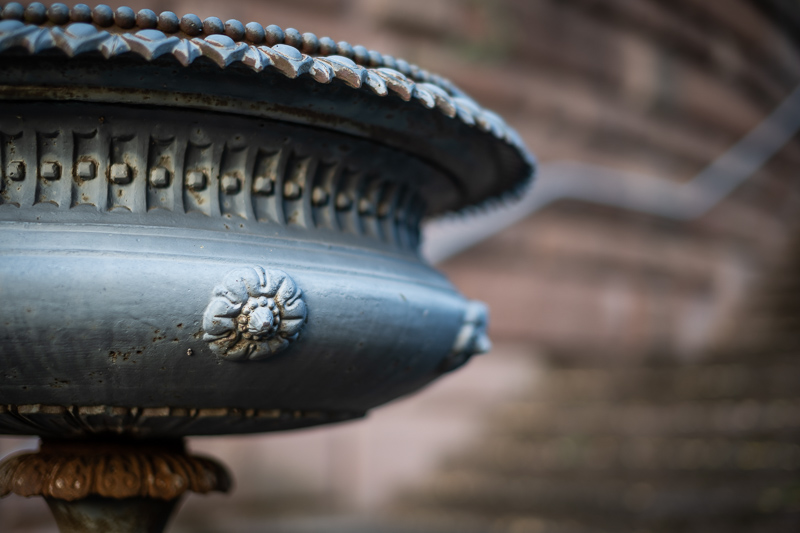
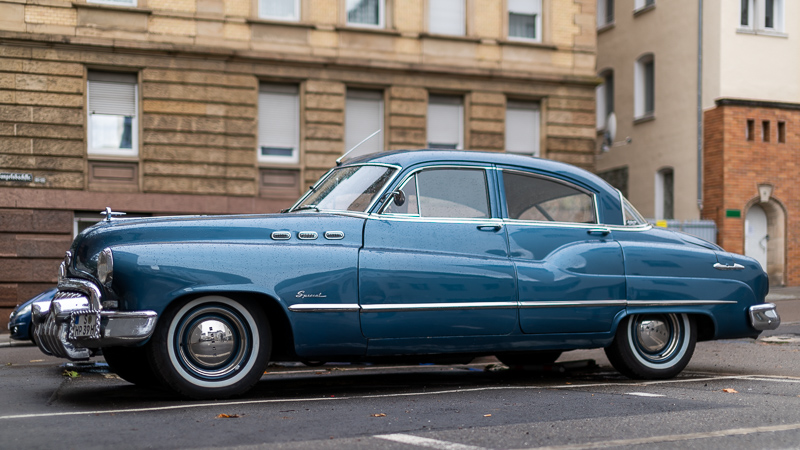


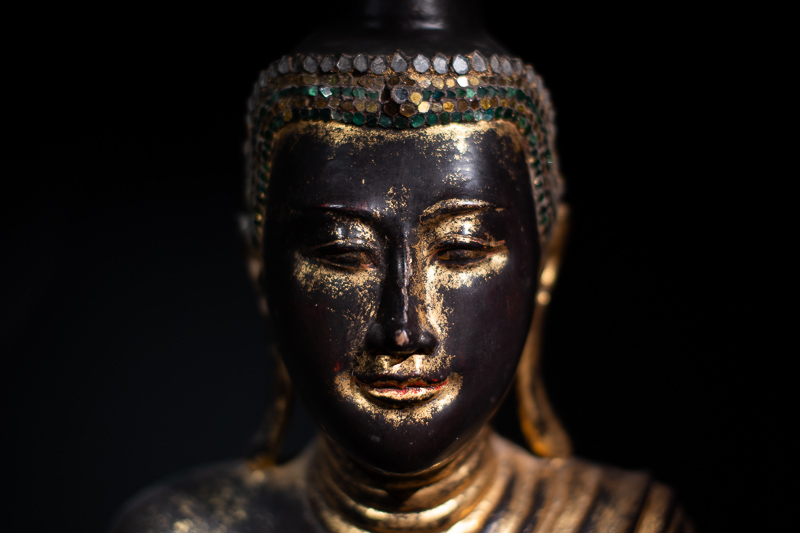











Further Reading
- All Lens Reviews
- What makes a picture good?
- Review: Sigma 35mm 1.2 Art DG DN
- Review: Sigma 40mm 1.4 Art
- Review: Sigma 105mm 1.4 Art
Support Us
Did you find this article useful or just liked reading it? Treat us to a coffee!
![]()
![]()
![]() via Paypal
via Paypal
This site contains affiliate links. If you make a purchase using any of the links marked as affiliate links, I may receive a small commission at no additional cost to you. This helps support the creation of future content.
Latest posts by BastianK (see all)
- Review: Nikon 58mm 1.2 Ai Noct-Nikkor - June 1, 2025
- Review: Zeiss 18mm 3.5 Distagon ZF.2 - May 28, 2025
- Review: Voigtländer VM 40mm 2.8 Heliar - May 25, 2025
























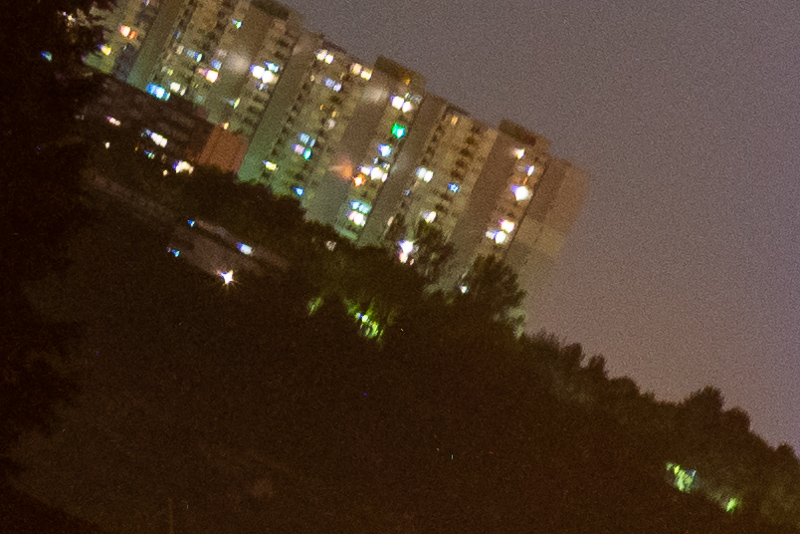


















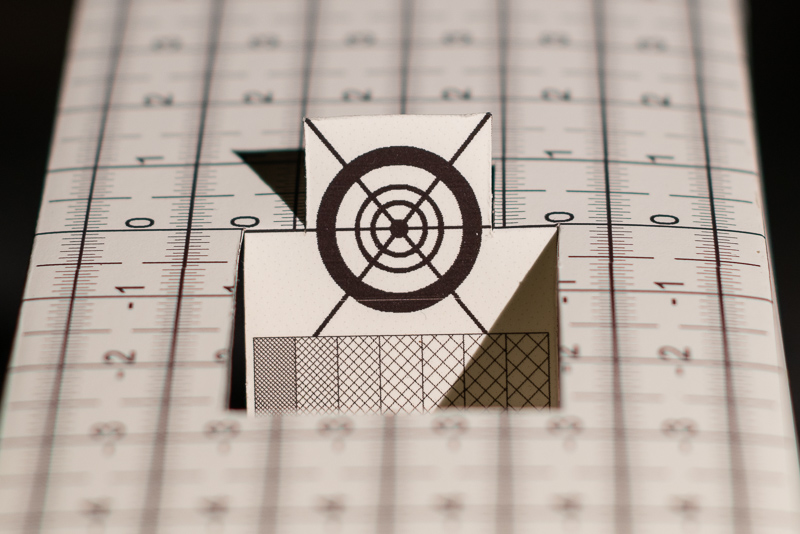
i really like the bokeh on that one.
Since DSLRs seem pretty much discontinued, I wonder if in the next 5-10yrs we see more DSLR lenses being useful and cheap options much like the manual ones that this blog had concentrated on until now.
The Sigma is nice for Portraits. Most of the EX lenses seem to tuned that way. It is similar in angle-of-view to many 45mm lenses.
The Yongnuo 50mm F1.4 is a bit more modern and even less expensive and not so wide, but AF is even worse. I should check if they have updated the firmware.
Nice review:)
Can I suggest a similar guide to sony A zeiss lenses? LA-EA5 can make them desirable this days:)
There are actually no A-mount lenses available I would actually be interested in that are not super expensive collector’s items already.
Also that adapter is pretty expensive compared to adapters for all manual lenses, so for beginners on a tight budget I also don’t really see those being a viable option.
A-Mount lenses are pretty bad and heavily overpriced.
The Zeiss 24-70 and the SIGMA EX 24-70 are pretty much on pair in terms of optical performance, bit the Zeiss is like the 5-times price.
The 35mm G lense is most likely the worst 35mm in the market at all an already was back in 2010
The 70-200 is soft at all focal lengths and so on.
A-Mount glass was mostly pretty bad and extremely expensive. The 70-200 G was 3000€ back then and is easily beat by the SIGMA EX DG OS HSM in all aspects.
So I can absolutely not recommend using A-Mount lenses on any modern camera. The Sony A900 back then already showed that those lenses find match up with any half modern standards.
Only exception maybe is the Sony G 70-400, for whatever reason that lense was pretty good and maybe the 135mm Zeiss.
your statements do not coincide with my experience with the A-Mount lenses
Je suis tout à fait d’accord avec Xjvolker.
This is not an informed take. They’re are some excellent Sony and Minolta A-mount lenses. A few have even been reviewed on this site and given excellent reviews (135mm 1.8 & 200mm 2.8). And yes I’d your looking for absolute sharpness wipe open a lens like the 35mm 1.4 g isn’t going to rank high however it’s known for a excellent rendering and a great wide portrait lens.
Could not disagree more about this post, except for the 70-400 which was and still is a stellar performer.
I use those Minolta AF lenses (24, 28, 135 f2.8, 50 f1.4, 200mm f2.8 APO) on a A7II body and results are just as good as many more modern lenses.
As for modern SSM zooms: no problem using them as well and they perform even better in terms of focus accuracy then when mounted on the A99.
To each his own.
Spent a lot of time manual focusing one on an a7ii. No complaints, always super creamy rendering. I have the Canon 50 f1.2 ef and I intend to buy one again as a backup- Never should’ve sold it!
Thank you for another interesting review. It’s very useful because it’s hard to find comparable reviews of a bit older and new lenses. Reading a review from over 10 years ago won’t tell us much about what to expect today, compared to some modern options. At the moment the lens can be found for below 200 euros, though I wonder if it’s a smart choice buying it as MF lens for Sony. That TTArtisan surely seems like a lot more comfortable option. It’s nice having viable options in (well) below 400 eur range though.
Thank you for this review. About 10 years ago I seriously considered this lens, but was scared away by unreliable AF, so I chose EF50/1.4.
Hoping the EF50/1.2 review will see the light soon!
Honestly these are the best 50mm images for bokeh I have ever seen, at least from an AF lens.
That is why I thought it wold be worthwhile to review 🙂
I’ve adapted some EF mount lenses so far. I found 3rd party lenses(pre Art or SP) could cause unintended malfunctions. Some lenses combination with mc11(even metabonesV) make the camera can’t be booted up or aperture stuck. But the others report these were not an issue for them with same combo. I’ve learned it is not always reliable to use electronically controlled lenses with different system.
For the money, I’d recommend vintage mf only lenses or investing more for the Art.
I hope you to get well soon. Hard times…
I recently purchased this lens for quite cheap because I was looking to adapt a 50mm lens that wouldn’t break the bank. I remember this lens being highly regarded due to it’s OOF rendering. I’m using it adapted on my Sony A9 and focus is quick and accurate wide open. I’m able to truly appreciate it’s optical qualities now on mirrorless cameras. Great lens if you can find a good copy!
I’m not a massive fan of the 50mm angle of view (I often feel it’s neither here nor there – i.e. I’d rather 35 or 85) but the bokeh of this lens is really lovely. I have two Sigma EX lenses (105 macro and 85 f/1.4) and I’ve been greatly satisfied with both of them, the 85 in particular has given me stunningly good shots, considering that I paid about 250€ for it. As you said, maybe they were on the large side back in the day, but by today’s standards (especially on a dslr) and certainly by Sigma’s standards, they feel relatively small, for such wide aperture lenses.
It’s the kind of lens I might just get at some point if I have money to waste and find it particularly cheap. Goodness knows I shouldn’t, but that bokeh…ah well, thanks for the review lad, much appreciated.
There is big sample quality issues with this lens, back in the day people were talking about “Sigma lottery” usually before buying this lens it was advised to test at least 3 or even more different samples and choose the best one…
If you are in Canon system the native 50mm 1,4f is as good or maybe even better, it is actually very close to FD design with different mount, so you get good bokeh and 3D pop with that lens.
As for now, there are a lot of different options for Sony system in all shapes and sizes actually.. Even the mentioned Canon is probably supported by sigma 11 so it would be better option.
This lens was mainly aiming at Nikon/Pentax market, because when it came out those systems didint had a lot of options to offer in this range, especially Nikon.
This is the first time I heard someone say that the EF 1.4/50 is better.
On the other hand I have read plenty reports of people claiming it to be one of the worst EF lenses.
Oh yes I have read those too, but EF 50mm 1.4f has a splendid rendition, once you put that lens on the camera and take a shot wide open you`ll see it there, that look the lens gives, for example the Sigma ART 50mm might be sharpen and superior in this regard, but it just doesn`t give that look.
This lens might be better than EF, but when you consider the variation of samples, I wouldn`t risk on that.
I find the 50/1.4 USM’s bokeh rather harsh and distracting wide open. Sharpness isn’t great wide open, either, but not terrible for what it is. Things settle down by 2.8. And there’s definitey some 3D pop going on. But if you want smooth bokeh like the Sigma, this is on the exact opposite end of the spectrum.
Phil, just read your review on 50mm EX . The article was good, but most of the pictures did not load and I couldn’t see anything to make any judgements in the photos. Ed
As a sports photographer working in low light, I am not so worried about the Bokeh but the auto focus speed in low light at f1.4. In this regard does the Canon f1.4 hold its own against the Sigma non art
congratulations excellent review! … I have the same lens camera and adapter, sigma + mc11 + Sony a7iii, But when I turn on the camera it does not recognize the lens and does not shoot, I tried to update the firmware of the adapter and the camera but nothing, is there anyone who has the same problem and solved it, thanks
Probably an old firmware version of the Sigma lens is to blame here. If you send it in they might be able to update it.
I love my version of this lens on a Pentax K1. Once the focus is corrected, it’s terrific. It’s my personal favorite to take portraits with the aperture wide open. Thanks for your review.
i had One the AF on Sony A7II with adpter is noisy and clunchy is big is heavy it’s not pretty lens but the bokeh was realty good i realty like it. it’s an old lens there are better options but i thing it stills usefull